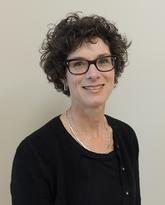
Janet Ronsky, PhD
Professor
Contact information
Phone
Research
Research interests
Our research group is focused on understanding relations amongst static and dynamic function and neuromotor control of the musculoskeletal system, as well as the role which alterations to bone and joint structures, mechanics and integrity associated with injury and aging play in joint health status. This year, we have extended our studies of in-vivo joint dynamic function and structure to include neuromotor control aspects as well as subject specific segmental inertial properties and muscle strength (based on MR imaging). These studies have focused on identifying alterations in in-vivo joint mechanics, joint congruence and function associated with PFPS and anterior cruciate ligament (ACL) deficiency. Additionally, studies investigating the role of ACL deficiency, reconstruction and bracing on dynamic stability and muscular coordination are in progress. Using helical axis approaches, we have successfully demonstrated differences in dynamic joint stability in ACL deficient subjects. In collaboration with Geomatics Engineering, we have identified image and surface registration model enhancements for MRI data, as well as new non-linear reconstruction algorithms based on bundle adjustment techniques that provide improved accuracy and computational efficiency for RSA. Our collaborative research evaluating relations between locomotion, postural control and eye gaze, as a function of joint health status and performance level have provided new insights into differences in movement control strategies utilized between trained “superperformers” and those with joint injuries. Our scoliosis research study expanded to include monthly clinical data acquisitions, comparative evaluations of optical imaging system accuracies between research centres and further development of the scoliosis brace prototype. We developed new approaches to classification of scoliosis curvatures using artificial intelligence approaches, as well as new methods for predictions of scoliotic curvatures based on external torso measurements.

